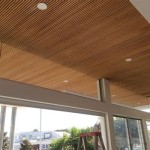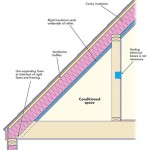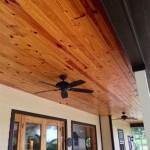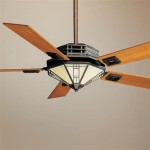What Material Are Drop Ceiling Tiles Made Of?
Drop ceilings, also known as suspended ceilings, are a common feature in commercial and residential buildings. They offer a multitude of benefits, including ease of installation, accessibility to utilities, and sound insulation. The tiles that make up these ceilings come in a wide variety of materials, each with its own unique properties and advantages. This article will delve into the most common materials used for drop ceiling tiles, providing insights into their characteristics and applications.
Mineral Fiber Tiles
Mineral fiber tiles are one of the most popular choices for drop ceilings. These tiles are typically made from a combination of mineral wool, fiberglass, and a binder. The resulting material is lightweight, durable, and fire-resistant. Mineral fiber tiles are known for their excellent sound absorption properties, making them ideal for spaces where noise reduction is a priority. They are also affordable and readily available, making them a cost-effective option for various applications.
There are two main types of mineral fiber tiles: acoustical and non-acoustical. Acoustical tiles have a textured surface that helps to scatter sound waves, further enhancing their sound absorption properties. Non-acoustical tiles typically have a smooth surface and are primarily used for aesthetic purposes.
Metal Tiles
Metal ceiling tiles offer a modern and contemporary aesthetic. These tiles are commonly made from aluminum, steel, or tin. Metal tiles are known for their durability, moisture resistance, and ease of cleaning. They are often used in environments where hygiene is a concern, such as hospitals, kitchens, and laboratories. Metal tiles can be painted or finished in a variety of colors and textures to match any design scheme.
While metal tiles can be slightly more expensive than other options, they offer a long lifespan and require minimal maintenance. Their reflective properties can also contribute to improved lighting efficiency.
Gypsum Tiles
Gypsum tiles are another common material for drop ceilings. These tiles are made from gypsum plaster mixed with various additives to enhance their properties. Gypsum tiles are lightweight, fire-resistant, and offer moderate sound absorption. They are often used in residential applications and commercial spaces where aesthetics and budget considerations are crucial.
Gypsum tiles can be painted or textured to match existing décor. They are also relatively easy to install and maintain, making them a popular choice for DIY projects.
Fiberglass Tiles
Fiberglass tiles are known for their affordability and versatility. These tiles are made from a combination of fiberglass strands and a binder, resulting in a lightweight and durable material. Fiberglass tiles offer excellent sound absorption and are commonly used in residential and commercial spaces. They are available in a range of colors and textures to suit various design preferences.
However, fiberglass tiles are not as fire-resistant as mineral fiber or gypsum tiles. They are also prone to damage if exposed to excessive moisture.
Wood Tiles
Wood ceiling tiles offer a warm, natural aesthetic that can add character to any space. These tiles are typically made from real wood or engineered wood products, such as plywood or MDF. Wood tiles are known for their durability, sound absorption, and insulating properties. They can be stained, painted, or left unfinished to showcase their natural beauty.
Wood tiles are generally more expensive than other materials and require more maintenance to prevent damage and moisture absorption. They are best suited for dry environments and may not be ideal for spaces with high humidity levels.
Other Tile Materials
In addition to the above, other less common materials used for drop ceiling tiles include:
- Plastic: Plastic tiles are lightweight, waterproof, and affordable. They are often used in bathrooms, kitchens, and other areas prone to moisture.
- Cork: Cork tiles offer excellent sound absorption, thermal insulation, and a unique natural look. They are typically used in residential applications and studios.
- Bamboo: Bamboo tiles are a sustainable and eco-friendly option with a natural and elegant appearance. They offer good sound absorption and thermal insulation properties.
When selecting drop ceiling tiles, it is essential to consider the specific requirements of the space, including aesthetics, sound absorption, fire resistance, moisture resistance, and budget. Each material boasts advantages and disadvantages, and the best choice will depend on the individual needs and preferences of the project.

What Are Ceiling Tiles Made Of Suspended Materials

Fiberglass 20mm Glasswool Acoustic Drop Ceiling Tile 2x4 Tiles Sound Absorbing Made In China Com

Ceiling Tiles By Material

Acoustic Mineral Wool Fiber Drop Ceiling Tiles For Decorative Material Board Panel Made In China Com

2x2 Drop Ceiling Panels Non Combustible Mineral Fiber Board Made In China Com

Mineral Fiber Suspended Ceiling Ceilings Armstrong Residential

A Basic Guide To Suspended Ceiling Grids Tiles

Acoustic Mineral Wool Fiber Drop Ceiling Tiles For Decorative Material Board Panel Made In China Com

Drop Ceiling Materials

Wood Cellulose Ceiling Tiles Asbestos Home Improvement Stack Exchange
Related Posts








